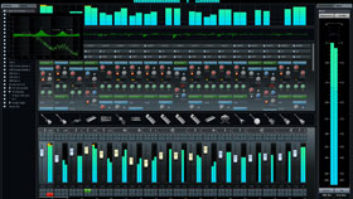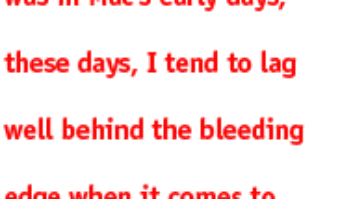At the risk of sounding like a VO in a movie trailer (“In a world, where everything is everywhere…), when you have unlimited tracks, and mounds of gear, when is enough, enough? I’m not talking about giving up learning and stretching, Heck no! That’s why we chose audio as a career. What I’m talking about is when to go with your known winners as opposed to bringing new gear and techniques to the game.
It’s tough because gear is better and more affordable than ever. Even through some tough financial years and working in an industry that’s a moving target, we are buying. Sweetwater, last month’s Mix cover story, is a $400 million retail business, growing 20 percent in each year of the past two decades, and the company is Number 3! (Or Number 2, depending on whom you talk to.) Every day brings pitches for gear upgrades, updates and new goodies to my inbox: high-dollar, stellar-looking hardware processors, and shockingly cheap mics, and speakers—some sounding better than units three times their price. Software with new capabilities, sometimes begging the question: Why? Do I really want to intelligently eliminate leakage on my drum tracks? New, improved, breakthroughs, and re-dos, all vying for our attention and $$$. I love to dive into a challenging review, get my head around new gear, then bring it to readers through a review or a column. But the truth is, I don’t have room in my workflow for 95 percent of it. There’s just too much.
Let’s break it down. Every audio engineer has their favorite mic and place to put it, for all kinds of applications. They learned these techniques by watching others, liking what they heard, then storing that technique in their personal preference folder. Since the beginning of my career in L.A., I was exposed to the best techniques West Coast engineers brought to many sessions. Now, after moving to Nashville, I’ve blown up my chops by watching the best in Music City do what they do best, then teaching audio students all about it.
Kick drum setups are some of the most interesting and different. One Grammy winner likes the front head off with a D112 and 421 placed near the edge of the shell halfway inside the drum. Another said the best thing to do with a D112 was to keep it in the box—he hated it. A different session called for just one mic, a D12E placed on the outside, unaltered kick head (no hole), at a spot with the least resonance to give the mic a better “look” at what’s inside. Monday brings a Beta 91a inside and an RCA 44 outside the kick, then Tuesday a Subkick and U 47 FET paired with a D12 VR placed through the hole with all filters engaged. All these engineers and approaches have something in common: They’re all correct. So we meticulously document these guest setups, then repeat the techniques many times with students on other live sessions. Despite these endless and great-sounding techniques, human nature for vets and newbies alike is to first use the technique that ticks all the boxes—it sounds great, and works well quickly and repeatedly. Not to say you wouldn’t change it up, but when the you’re with A players using live ammo, it’s your preference.
Gear designers play the new-for-new-sake game, too, sometimes seeming without reason. I can’t blame them, they have to set themselves apart to stay alive. It’s nothing new. I’m always having to explain why certain British console EQs and pre’s have their zero point (no boost/cut) pointing toward the console operator at the 6 o’clock position and not the way most others are situated at 12. Patchbay design is the wild, wild west, with some labels being far from intuitive. On some bays, a multitrack send is an input and multitrack return is an output, while at the same time, the insert send is an output and insert return is an input. I get the EQ gain knob placement: It’s easier for the user to see the pot’s position while seated. But the MT/insert patchbay labels are a mashup of imperialistic and practical points of view—multitrack “send” (in) and “return” (out) is the console’s perspective? Really? How about using MT in and MT out?
I’m currently reviewing a hardware compressor that has thrown out traditional ways of thinking about metering, labeling, output control, intuitive use of buttons, threshold, gain reduction, and more. When you go that far off the known trail, a great manual is imperative, but unfortunately this unit doesn’t bring it. So to write the review, I have to trash my prefs every time I use it. The unit’s design makes it hard to recall successful settings, gives counterintuitive feedback, and I can’t even go to the manual for an answer if I have an issue. I get trying to be different, but is this how you want your artist to feel while they’re doing their gig?
So when do you go with the tried vs. the new? If you’ve won games with “those” shoes, as long as their comfortable, you get the calls, everyone likes your work and you’re making great music. Keep it up. It’s really more about what the operator brings while using the tools. Because gear set out on a table by itself all sounds the same. “It’s vewy vewy quiet!” – E. Fudd




